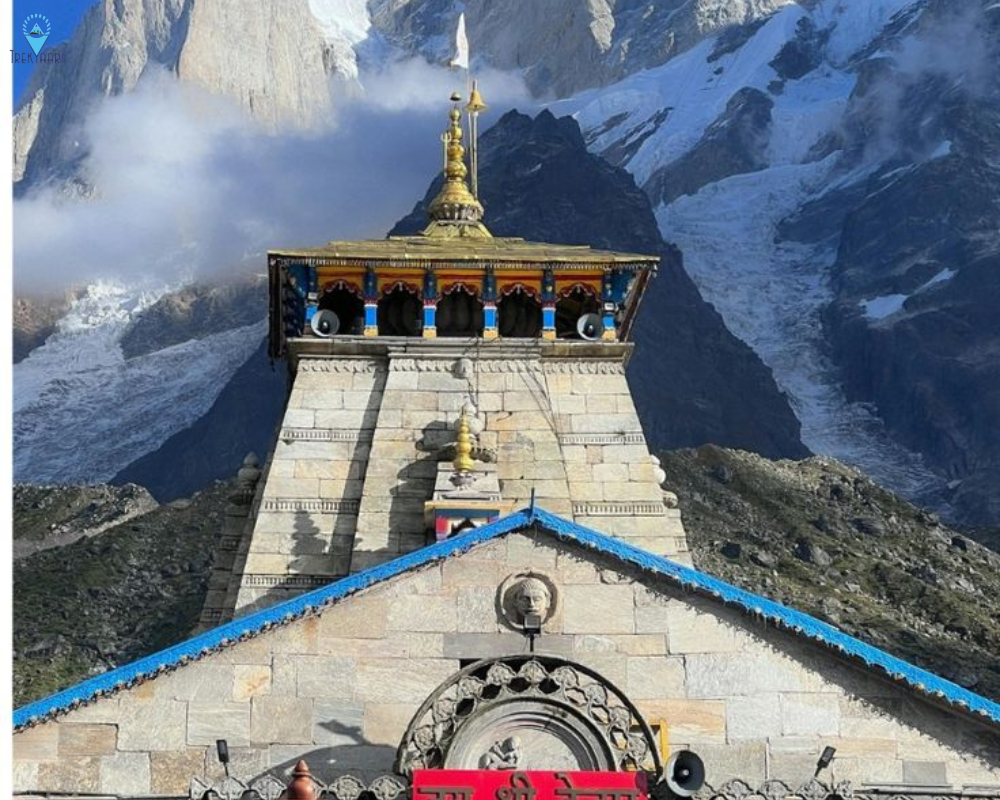The Do Dham Yatra is a significant spiritual journey that takes pilgrims to the revered shrines of Kedarnath and Badrinath in the Indian Himalayas. This pilgrimage is not only a quest for divine blessings but also an exploration of the natural beauty, cultural richness, and spiritual depth of the region. Here are the top highlights of the Do Dham Yatra that make it a memorable and transformative experience.
Do Dham Yatra
Undertaking the Do Dham Yatra is a journey filled with devotion, adventure, and discovery. The pilgrimage to the holy shrines of Kedarnath and Badrinath provides an opportunity to connect with the divine, immerse in the serene beauty of the Himalayas, and experience the vibrant local culture. Here, we delve into the highlights of this sacred journey that ensure it remains etched in the memory of every pilgrim.
Kedarnath Temple: A Spiritual Epicenter
The Kedarnath Temple, dedicated to Lord Shiva, is one of the twelve Jyotirlingas and holds immense religious significance. Nestled amidst the snow-capped peaks of the Garhwal Himalayas, the temple's remote location adds to its mystique and spiritual allure. The temple, believed to have been built by the Pandavas and later revived by Adi Shankaracharya, stands as a testament to enduring faith and devotion.
Pilgrims often describe the moment of first seeing the temple, set against the dramatic backdrop of the Kedarnath range, as an awe-inspiring and deeply moving experience. The daily rituals, aartis (prayer ceremonies), and the sacred atmosphere within the temple complex provide a profound sense of peace and connection with the divine.
Trek to Kedarnath: An Adventurous Pilgrimage
The trek to Kedarnath is a 16 km journey from Gaurikund, offering both physical challenge and spiritual reward. The trail, which winds through dense forests, alongside the Mandakini River, and across rugged terrain, provides breathtaking views and a close encounter with nature's splendor.
Trekking this path is a pilgrimage in itself, where every step brings a sense of accomplishment and closer proximity to the divine. The camaraderie among fellow pilgrims, the refreshing mountain air, and the stunning vistas of the Himalayas enhance the overall experience, making the journey to Kedarnath an unforgettable adventure.
Badrinath Temple: A Haven of Serenity
The Badrinath Temple, dedicated to Lord Vishnu, is one of the Char Dham and an important Vaishnavite shrine. Located on the banks of the Alaknanda River, the temple is surrounded by the majestic Nar and Narayan mountain ranges. The temple’s striking architecture, adorned with intricate carvings and vibrant colors, stands in harmonious contrast to the serene natural beauty of its surroundings.
The spiritual aura of Badrinath, coupled with its historical and mythological significance, makes it a must-visit destination. Pilgrims partake in rituals and prayers, seeking blessings and experiencing a deep sense of tranquility and devotion. The temple’s hot spring, Tapt Kund, where pilgrims bathe before entering the shrine, adds to the unique spiritual experience.
Scenic Beauty and Natural Splendor
The Do Dham Yatra offers a visual feast of the Himalayan landscape. From the lush green valleys and dense forests to the pristine rivers and towering peaks, the natural beauty encountered along the way is simply breathtaking. The journey through the Garhwal Himalayas, with its ever-changing vistas, provides countless opportunities for nature lovers and photographers to capture the majestic beauty of the region.
The sight of the snow-capped peaks of the Kedarnath range, the serene flow of the Alaknanda River, and the lush greenery surrounding Badrinath create a picturesque setting that stays with pilgrims long after the journey ends. These natural wonders not only enhance the spiritual experience but also offer moments of reflection and peace.
Mana Village: The Last Indian Village
Mana Village, located near Badrinath, is the last Indian village before the Tibetan border. This quaint village, nestled at an altitude of 3,200 meters, offers a glimpse into the traditional lifestyle and culture of the Himalayan people. The village is known for its stone houses, narrow lanes, and friendly inhabitants, who welcome pilgrims with warmth and hospitality.
A visit to Mana Village provides an enriching cultural experience. Pilgrims can explore local handicrafts, taste traditional Garhwali cuisine, and learn about the customs and traditions of the local Bhotiya community. The village is also home to several mythological sites, including the Vyas Gufa (cave where sage Ved Vyas is believed to have composed the Mahabharata) and the Ganesh Gufa (cave dedicated to Lord Ganesha).
Vasudhara Falls: A Natural Marvel
Located a few kilometers from Mana Village, Vasudhara Falls is a stunning natural wonder that adds to the charm of the Do Dham Yatra. The waterfall, cascading from a height of 400 feet, creates a mesmerizing spectacle against the backdrop of the rugged Himalayan landscape. The trek to Vasudhara Falls, though challenging, is a rewarding experience, offering scenic views and a sense of adventure.
The falls are believed to have spiritual significance, and it is said that the water of Vasundhara does not touch those who are impure of heart. This belief, coupled with the sheer beauty of the falls, makes it a popular spot for pilgrims seeking both natural beauty and spiritual solace.
Tapt Kund: The Sacred Hot Springs
Tapt Kund, located near the Badrinath Temple, is a natural hot spring that holds significant spiritual importance. Pilgrims take a ritual dip in the kund before entering the temple, believing that the water has purifying properties. The hot spring, with its warm, soothing waters, provides relief from the cold mountain climate and is a unique feature of the Badrinath pilgrimage experience.
The Tapt Kund is fed by sulfur springs, and the water temperature remains warm throughout the year. The ritual bath in Tapt Kund is not only a physical cleansing but also a spiritual purification, preparing the pilgrim for the divine encounter at the Badrinath Temple.
Festivals and Religious Ceremonies
The Do Dham Yatra is also an opportunity to witness and participate in the vibrant festivals and religious ceremonies of the region. The Badri-Kedar Utsav, celebrated in the month of June, is a major event that draws pilgrims and tourists alike. The festival, marked by music, dance, and religious rituals, showcases the rich cultural heritage of the Garhwal Himalayas.
Participating in these festivals provides a deeper understanding of the local traditions and religious practices. The energy and enthusiasm of the celebrations, combined with the spiritual significance of the rituals, create a festive atmosphere that enhances the pilgrimage experience.
Local Cuisine: A Taste of Tradition
The Garhwali region offers a variety of traditional dishes that add a culinary delight to the pilgrimage. The local cuisine, characterized by its simplicity and use of fresh, locally sourced ingredients, reflects the cultural and agricultural practices of the region. Pilgrims can savor dishes like Aloo Ke Gutke (spicy potatoes), Kafuli (spinach-based dish), and Phaanu (lentil preparation) at local dhabas and eateries.
Tasting the local food is an integral part of the pilgrimage experience, providing nourishment and a connection to the local way of life. The flavors and aromas of the traditional dishes, enjoyed amidst the serene surroundings of the Himalayas, create a memorable culinary journey.
Ashrams and Guesthouses: Unique Accommodations
Accommodation during the Do Dham Yatra ranges from simple guesthouses to comfortable hotels and ashrams. Staying in these accommodations allows pilgrims to experience the local way of life and enjoy the hospitality of the region. Many prefer staying in ashrams, which provide a tranquil environment for meditation and prayer, adding to the spiritual essence of the journey.
The ashrams and guesthouses, often located in scenic spots, offer clean and comfortable facilities for pilgrims. The simplicity and warmth of these accommodations enhance the overall pilgrimage experience, making it more meaningful and memorable.
Eco-Friendly Practices
With growing awareness about sustainable tourism, the Do Dham Yatra promotes eco-friendly practices to preserve the pristine environment of the Himalayas. Pilgrims are encouraged to avoid using plastic, carry reusable water bottles, and dispose of waste responsibly. Engaging in eco-friendly practices helps protect the natural beauty of the region and ensures that future generations can also enjoy the pilgrimage.
Efforts to reduce the carbon footprint of the Yatra include using biodegradable products, supporting local eco-friendly initiatives, and being mindful of the environmental impact of the journey. These practices not only protect the environment but also respect the sanctity of the pilgrimage.
Personal Growth and Reflection
The Do Dham Yatra is not just a physical journey but also a path to personal growth and reflection. The challenges faced during the trek, the spiritual practices, and the time spent in nature provide opportunities for introspection. The Yatra teaches patience, resilience, and the importance of faith, leaving a lasting impact on the mind and spirit.
The solitude and tranquility of the mountains provide a perfect setting for meditation and self-reflection. The Yatra encourages pilgrims to disconnect from the hustle and bustle of daily life and reconnect with their inner selves. The sense of accomplishment upon completing the pilgrimage fosters confidence and a renewed sense of purpose.
Camaraderie Among Pilgrims
One of the enriching aspects of the Do Dham Yatra is the camaraderie among fellow pilgrims. Sharing the journey, exchanging stories, and supporting each other through the challenges create a sense of community. The bonds formed during the Yatra often last a lifetime, as pilgrims connect with people from diverse backgrounds united by a common purpose.
The shared experience of the pilgrimage fosters a sense of unity and mutual respect. Whether it’s offering a helping hand during the trek or sharing a meal at a roadside eatery, the connections made during the Yatra are heartfelt and enduring. These interactions enrich the journey, adding depth and meaning to the pilgrimage.
Improved Infrastructure and Accessibility
In recent years, the accessibility to Kedarnath and Badrinath has improved significantly. Better infrastructure, improved roads, and the availability of helicopter services to Kedarnath have made the pilgrimage more accessible to a wider audience. Various tour operators offer guided tours, taking care of logistics and ensuring a smooth experience for the pilgrims.
The improved connectivity, including well-maintained roads and reliable transport services, makes it easier for pilgrims to undertake the Yatra. The introduction of helicopter services to Kedarnath has made it possible for those who may find the trek challenging to still visit the shrine. Guided tours offer additional support, including knowledgeable guides, arranged accommodations, and transportation, allowing pilgrims to focus on the spiritual aspects of the journey.
Conclusion
The Do Dham Yatra is a journey that transcends the physical act of traveling. It is a pilgrimage that enriches the soul, strengthens faith, and offers a deep connection to the divine. From the spiritual significance of Kedarnath and Badrinath to the breathtaking beauty of the Himalayas, from the cultural immersion in local traditions to the camaraderie among fellow pilgrims, every aspect of the Yatra contributes to making it a memorable and transformative experience.






Comments